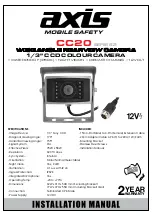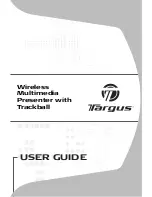
72
•
Camera Performance and Features
Linea HS Series Camera User's Manual
Image Response Uniformity & Flat Field Calibration
See the section Flat Field Category in Appendix A for GenICam features associated with this section
and how to use them.
Related Features:
Images commonly have
lower response at the edges of the camera’s field of view compared to its
center. This is a result of lens vignetting and structure in the illumination source.
Diffusing elements in the light path removes structure in the illumination and may improve edge-
responsivity.
Decreasing the lens aperture can also improve edge-responsivity, if barrel vignetting (a shadow
cast on the sensor by the focus helical or extension tubes) is present.
The camera can compensate for edge roll-off and other optical non-uniformities by using flat field
calibration.
•
When performing Flat Field (PRNU) calibration, the camera should be imaging a front
illuminated white target or rear bright field illumination source. The optical setup should be
as per the inspection system, including lens magnification, aperture, illumination intensity,
spectral content and illuminator beam structure.
•
Flat field calibration should be performed when the camera temperature has stabilized.
•
Flat field calibration will adjust all pixels to have the same value as the peak pixel value or
target level, as per the calibration mode selected.
•
If the flat field calibration is set to a target level that is lower than the peak value and the
system gain is set to a low value, then it is possible that the sensor will maximize its output
before the camera’s output reaches 255 DN. This can be s
een when a portion of the output
stops increasing before reaching 255 DN with increasing illumination and the PRNU
deteriorates. This effect can be resolved by decreasing the light level or exposure control
time.
Following a flat field calibration, all pixels should be at their un-calibrated peak value or target
value. Changing gain values now allows the user to make refinements to the operating responsivity
level.
Note:
The best flat field calibration can be achieved by performing it at the mid
DN level of the working range used in the operation. Any flat field error associated
with residual non-linearity in the pixel will be halved as compared to performing a
calibration at the peak value of the operating range. A simple way of performing
this is to reduce exposure time to half what is used in the operation in order to get
the mid DN level for flat field calibration. Once complete, return the exposure time
to its original setting.
















































